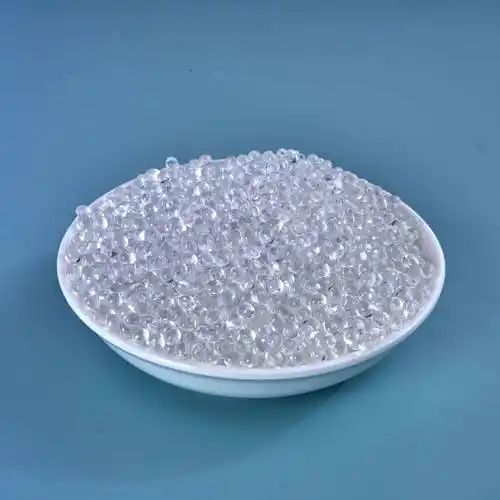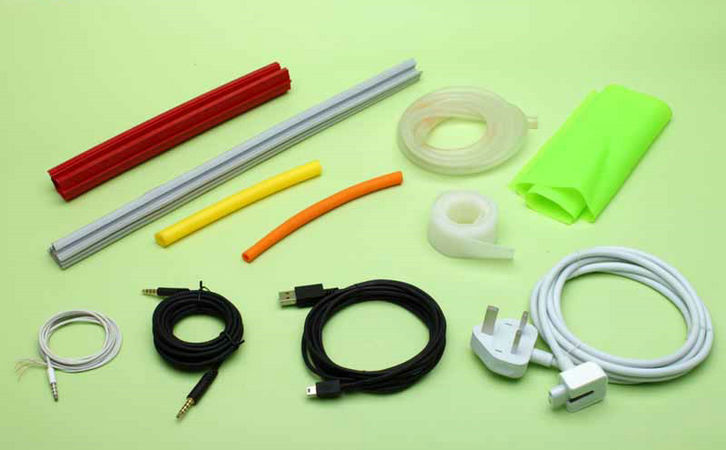As someone who’s been in the seating and comfort industry for over a decade, I’ve seen countless products come and go, each promising to be the ultimate solution for comfort. Among them, TPE gel cushions have gained popularity for their unique blend of softness, support, and durability. But one question I hear time and again is: Is a thicker TPE gel cushion always better? It’s a fair question, and one that deserves a thoughtful, detailed answer. Having tested and worked with these cushions for years, I can tell you it’s not a simple yes or no. Let’s dive into the nuances of TPE gel cushions, their thickness, and what really matters when choosing one.

Understanding TPE Gel Cushions
Before we get into thickness, let’s clarify what TPE gel cushions are. TPE, or Thermoplastic Elastomer, is a material that combines the flexibility of rubber with the durability of plastic. In cushions, it’s often structured in a honeycomb or grid pattern, which allows for breathability, weight distribution, and pressure relief. These cushions are popular for office chairs, car seats, wheelchairs, and even medical settings because they’re lightweight, easy to clean, and provide excellent comfort for long sitting periods.
When people ask about thickness, they’re often wondering if a chunkier cushion automatically means more comfort or better support. It’s a natural assumption—more material might seem like more cushioning. But in my experience, it’s not always that straightforward. Let’s explore why.
The Role of Thickness in TPE Gel Cushions
Thickness in TPE gel cushions typically ranges from 1.5 cm to 8 cm, depending on the product and its intended use. A thicker cushion might seem like it offers more padding, but there are several factors to consider when deciding if thicker is better for you. Below, I’ll break down the pros and cons of thicker cushions, drawing from my hands-on experience with these products.
Benefits of Thicker TPE Gel Cushions
Enhanced Pressure Relief
Thicker cushions generally have more material to distribute your body weight, which can reduce pressure points, especially for people who sit for extended periods. For example, in my testing, cushions around 5–8 cm thick tend to excel at relieving tailbone pressure for users with conditions like sciatica or coccyx pain.
Better Supportbur Support for Heavy Users
If you’re on the heavier side, a thicker cushion can provide more stability and support. I’ve worked with clients who found that thinner cushions (under 3 cm) felt too flimsy under their weight, while thicker ones offered a sturdier base.
Improved Comfort for Long-Term Sitting
For those who sit for hours—think office workers or gamers—thicker cushions can feel more luxurious. The extra gel layers can provide a softer, more cushioned feel, which I’ve noticed makes a difference during marathon sitting sessions.

Drawbacks of Thicker TPE Gel Cushions
Reduced Portability
Thicker cushions are heavier and bulkier. If you need to move your cushion between your car, office, or home, a 6 cm+ cushion can be a hassle compared to a slim 2–3 cm one. I’ve had clients complain about this when they prioritized thickness over practicality.
Heat Retention
While TPE gel is breathable due to its grid structure, thicker cushions can trap more heat, especially if you’re sitting for hours in a warm environment. I’ve noticed this in feedback from users in hotter climates who found thinner cushions more comfortable.
Compatibility with Seating Surfaces
Not all chairs or seats are designed for thick cushions. For example, a 7 cm cushion on a shallow office chair might raise you too high, affecting posture or desk ergonomics. I’ve seen this issue pop up in poorly designed office setups.
Cost
Thicker cushions often cost more due to the additional material. In my experience, the price jump from a 3 cm to a 6 cm cushion doesn’t always translate to proportional comfort gains.

Thickness Comparison Table
To make this clearer, here’s a table summarizing how thickness impacts key factors:
|
Thickness (cm) |
Pressure Relief |
Portability |
Breathability |
Cost |
|---|---|---|---|---|
|
1.5–3 cm |
Moderate |
High |
Excellent |
Low |
|
3–5 cm |
Good |
Moderate |
Good |
Moderate |
|
5–8 cm |
Excellent |
Low |
Moderate |
High |
This table is based on my observations from testing various TPE gel cushions across different use cases, from office settings to medical applications.
Key Factors Beyond Thickness
While thickness matters, it’s not the only factor that determines whether a TPE gel cushion will work for you. Over the years, I’ve learned that other aspects of the cushion’s design and your personal needs play a huge role. Here’s what I recommend focusing on:
1. Your Specific Needs
Everyone’s body and seating habits are different. For example:
If you have tailbone pain or conditions like hemorrhoids, a thicker cushion (5 cm or more) with a cutout design might be ideal for reducing pressure.
For general office use, a 3–4 cm cushion often strikes the perfect balance between comfort and portability.
If you’re using the cushion in a wheelchair, a thicker cushion might provide the support needed for all-day use, but it must fit the chair’s dimensions.
I once worked with a client who was a long-haul truck driver. He swore by a 6 cm cushion because it helped with his lower back pain during 10-hour drives. Meanwhile, a colleague who only needed a cushion for her short commute preferred a 2.5 cm one for its lightweight design.

2. Cushion Design and Structure
Not all TPE gel cushions are created equal. The honeycomb or grid structure is critical for breathability and weight distribution. I’ve tested cushions where a thinner model with a well-designed grid outperformed a thicker one with a less optimized structure. Look for:
Uniform grid size: Smaller, tighter grids (e.g., 1 cm x 1 cm) distribute weight better than larger ones.
Edge support: Some cushions have reinforced edges to prevent sagging, which I’ve found makes a big difference in durability.
3. Cover Material
Most TPE gel cushions come with a removable cover, and the material matters. In my experience:
Mesh covers are best for breathability, especially in hot climates.
Non-slip bottoms are a must for keeping the cushion in place, especially on slick surfaces like car seats.
Water-resistant covers are ideal for medical or outdoor use, as they’re easier to clean.
I once had a client who ruined a perfectly good cushion because the cover wasn’t washable, and a coffee spill soaked into the gel. Always check the cover’s quality before buying.
4. Your Seating Environment
Where you’ll use the cushion makes a big difference. For example:
Car seats: A 3–5 cm cushion is usually sufficient, as car seats already have some padding. Thicker ones might interfere with seatbelt positioning.
Office chairs: If your chair is ergonomic, a thinner cushion might complement it better. I’ve seen thick cushions throw off the chair’s lumbar support.
Wheelchairs or medical settings: Thicker cushions (5–8 cm) are often better for prolonged sitting, but ensure they fit the chair’s width.

5. Body Weight and Size
Your weight and build influence how a cushion feels. Heavier individuals might find thin cushions too flimsy, while lighter users might feel overwhelmed by a thick one. I’ve had clients across the spectrum, and matching the cushion to their body type is key.
My Personal Experience with TPE Gel Cushions
Over the years, I’ve tested dozens of TPE gel cushions in various settings—my office, my car, and even during a brief stint using a wheelchair after an injury. One thing I’ve learned is that thicker doesn’t always mean better. For instance, I initially bought a 7 cm cushion thinking it would be the ultimate comfort solution for my desk chair. But it raised my seating height too much, messing with my desk ergonomics and causing shoulder strain. I switched to a 3.5 cm cushion with a high-quality grid design, and it was a game-changer—comfortable, breathable, and easy to carry to meetings.
On the flip side, when I was helping a friend with chronic sciatica, a 6 cm cushion with a tailbone cutout was a lifesaver. It provided the extra support needed without being too bulky for her wheelchair. It’s all about matching the cushion to your specific needs and environment.
Practical Tips for Choosing the Right Thickness
Based on my experience, here are some actionable tips for picking the right TPE gel cushion thickness:
Measure Your Seat: Ensure the cushion’s dimensions (width, depth, and thickness) fit your chair or seat. A thick cushion on a shallow seat can feel awkward.
Test for Comfort: If possible, try sitting on cushions of different thicknesses. Many retailers offer trial periods—take advantage of them.
Consider Portability: If you’re frequently moving the cushion, prioritize lighter, thinner models (2–4 cm).
Check Reviews: Look for user feedback from people with similar needs (e.g., office workers, drivers, or medical users). I’ve found that real-world reviews often highlight practical issues like heat retention or durability.
Budget Wisely: Don’t assume the most expensive, thickest cushion is the best. A well-designed 3 cm cushion can outperform a poorly made 6 cm one.

Common Misconceptions About Thickness
In my years in this industry, I’ve heard a few myths about TPE gel cushions that I’d like to debunk:
Myth 1: Thicker cushions are always more comfortable.
Not true. Comfort depends on design, grid structure, and how the cushion fits your body and seat. A poorly designed thick cushion can feel worse than a well-made thin one.
Myth 2: Thicker cushions last longer.
Durability depends more on the quality of the TPE material and cover. I’ve seen thin cushions last years with proper care.
Myth 3: Thicker cushions are better for medical use.
While thicker cushions can help with pressure relief, the right design (e.g., cutouts for tailbone relief) matters more than sheer thickness.
Conclusion
So, is a thicker TPE gel cushion always better? Not necessarily. While thicker cushions (5–8 cm) can offer excellent pressure relief and support for specific needs like medical conditions or heavy body weight, they come with trade-offs like reduced portability and potential heat retention. Thinner cushions (1.5–4 cm) can be just as effective for general use, especially if they’re well-designed with a breathable grid and a quality cover. The key is to match the cushion’s thickness to your body, seating environment, and lifestyle.
In my years working with these products, I’ve learned that comfort is personal. What works for one person might not for another. Take the time to assess your needs, test different options, and prioritize quality over thickness alone. A good TPE gel cushion should feel like an extension of your seat, not a one-size-fits-all solution.

Related Questions and Answers
Q: Can a TPE gel cushion help with lower back pain?
A: Yes, especially if it’s designed with a tailbone cutout or ergonomic shape. In my experience, a 4–6 cm cushion with good grid support can reduce pressure on the lower spine, but pair it with an ergonomic chair for best results.
Q: Are TPE gel cushions washable?
A: The gel itself is water-resistant and can be wiped clean. However, the cover’s washability depends on the material. I recommend choosing a cushion with a removable, machine-washable cover for easy maintenance.
Q: How long do TPE gel cushions last?
A: With proper care, a quality TPE gel cushion can last 2–5 years. I’ve seen some last longer with minimal wear, especially if the cover is durable and the gel is high-grade.
Q: Can I use a TPE gel cushion on any chair?
A: Most cushions are versatile, but check the dimensions and thickness against your chair’s size. A thick cushion on a small chair can disrupt posture, as I learned the hard way with my office setup.
Q: Are there eco-friendly TPE gel cushions?
A: Some brands offer TPE cushions made from recyclable or eco-friendly materials. In my research, these are less common but worth seeking out if sustainability is a priority.





